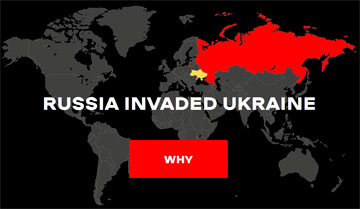Multiple vulnerabilities in Oracle Communications Cloud Native Core Security Edge Protection Proxy
| Risk | High |
| Patch available | YES |
| Number of vulnerabilities | 6 |
| CVE-ID | CVE-2023-26048 CVE-2023-20863 CVE-2023-34462 CVE-2023-2976 CVE-2023-20883 CVE-2023-34034 |
| CWE-ID | CWE-400 CWE-20 CWE-276 CWE-399 CWE-254 |
| Exploitation vector | Network |
| Public exploit | N/A |
| Vulnerable software |
Oracle Communications Cloud Native Core Security Edge Protection Proxy Server applications / DLP, anti-spam, sniffers |
| Vendor | Oracle |
Security Bulletin
This security bulletin contains information about 6 vulnerabilities.
1) Resource exhaustion
EUVDB-ID: #VU75218
Risk: Medium
CVSSv4.0: 6.6 [CVSS:4.0/AV:N/AC:L/AT:N/PR:N/UI:N/VC:N/VI:N/VA:H/SC:N/SI:N/SA:N/E:U/U:Green]
CVE-ID: CVE-2023-26048
CWE-ID:
CWE-400 - Resource exhaustion
Exploit availability: No
DescriptionThe vulnerability allows a remote attacker to perform a denial of service (DoS) attack.
The vulnerability exists due to application does not properly control consumption of internal resources when processing multipart requests in request.getParameter(). A remote attacker can trigger resource exhaustion and perform a denial of service (DoS) attack.
MitigationInstall update from vendor's website.
Vulnerable software versionsOracle Communications Cloud Native Core Security Edge Protection Proxy: 23.1.3
CPE2.3 External linkshttps://www.oracle.com/security-alerts/cpuoct2023.html?936686
Q & A
Can this vulnerability be exploited remotely?
Yes. This vulnerability can be exploited by a remote non-authenticated attacker via the Internet.
Is there known malware, which exploits this vulnerability?
No. We are not aware of malware exploiting this vulnerability.
2) Input validation error
EUVDB-ID: #VU75409
Risk: Medium
CVSSv4.0: 4.9 [CVSS:4.0/AV:N/AC:L/AT:N/PR:L/UI:N/VC:N/VI:N/VA:H/SC:N/SI:N/SA:N/E:U/U:Green]
CVE-ID: CVE-2023-20863
CWE-ID:
CWE-20 - Improper input validation
Exploit availability: No
DescriptionThe vulnerability allows a remote attacker to perform a denial of service (DoS) attack.
The vulnerability exists due to insufficient validation of user-supplied input. A remote user can use a specially crafted SpEL expression and perform a denial of service (DoS) attack.
MitigationInstall update from vendor's website.
Vulnerable software versionsOracle Communications Cloud Native Core Security Edge Protection Proxy: 23.1.0
CPE2.3 External linkshttps://www.oracle.com/security-alerts/cpuoct2023.html?936686
Q & A
Can this vulnerability be exploited remotely?
Yes. This vulnerability can be exploited by a remote authenticated user via the Internet.
Is there known malware, which exploits this vulnerability?
No. We are not aware of malware exploiting this vulnerability.
3) Resource exhaustion
EUVDB-ID: #VU77573
Risk: Medium
CVSSv4.0: 6.6 [CVSS:4.0/AV:N/AC:L/AT:N/PR:N/UI:N/VC:N/VI:N/VA:H/SC:N/SI:N/SA:N/E:U/U:Green]
CVE-ID: CVE-2023-34462
CWE-ID:
CWE-400 - Resource exhaustion
Exploit availability: No
DescriptionThe vulnerability allows a remote attacker to perform a denial of service (DoS) attack.
The vulnerability exists due to application does not properly control consumption of internal resources if no idle timeout handler was configured. A remote attacker can send a client hello packet, which leads the server to buffer up to 16MB of data per connection and results in a denial of service condition.
Install update from vendor's website.
Vulnerable software versionsOracle Communications Cloud Native Core Security Edge Protection Proxy: 23.1.3
CPE2.3 External linkshttps://www.oracle.com/security-alerts/cpuoct2023.html?936686
Q & A
Can this vulnerability be exploited remotely?
Yes. This vulnerability can be exploited by a remote non-authenticated attacker via the Internet.
Is there known malware, which exploits this vulnerability?
No. We are not aware of malware exploiting this vulnerability.
4) Incorrect default permissions
EUVDB-ID: #VU77107
Risk: Low
CVSSv4.0: 1.1 [CVSS:4.0/AV:L/AC:L/AT:N/PR:L/UI:N/VC:L/VI:L/VA:N/SC:N/SI:N/SA:N/E:U/U:Clear]
CVE-ID: CVE-2023-2976
CWE-ID:
CWE-276 - Incorrect Default Permissions
Exploit availability: No
DescriptionThe vulnerability allows a local user to escalate privileges on the system.
The vulnerability exists due to incorrect default permissions in com.google.common.io.FileBackedOutputStream. A local user with access to the system can view contents of files and directories or modify them.
MitigationInstall update from vendor's website.
Vulnerable software versionsOracle Communications Cloud Native Core Security Edge Protection Proxy: 23.1.3
CPE2.3 External linkshttps://www.oracle.com/security-alerts/cpuoct2023.html?936686
Q & A
Can this vulnerability be exploited remotely?
No. This vulnerability can be exploited locally. The attacker should have authentication credentials and successfully authenticate on the system.
Is there known malware, which exploits this vulnerability?
No. We are not aware of malware exploiting this vulnerability.
5) Resource management error
EUVDB-ID: #VU76427
Risk: Medium
CVSSv4.0: 6.6 [CVSS:4.0/AV:N/AC:L/AT:N/PR:N/UI:N/VC:N/VI:N/VA:H/SC:N/SI:N/SA:N/E:U/U:Green]
CVE-ID: CVE-2023-20883
CWE-ID:
CWE-399 - Resource Management Errors
Exploit availability: No
DescriptionThe vulnerability allows a remote attacker to perform a denial of service (DoS) attack.
The vulnerability exists due to improper management of internal resources within the application. A remote attacker can pass specially crafted data to the application and perform a denial of service (DoS) attack.
Specifically, an application is vulnerable if all of the conditions are true:
- The application has Spring MVC auto-configuration enabled. This is the case by default if Spring MVC is on the classpath.
- The application makes use of Spring Boot's welcome page support, either static or templated.
- Your application is deployed behind a proxy which caches 404 responses.
Install update from vendor's website.
Vulnerable software versionsOracle Communications Cloud Native Core Security Edge Protection Proxy: 23.1.3
CPE2.3 External linkshttps://www.oracle.com/security-alerts/cpuoct2023.html?936686
Q & A
Can this vulnerability be exploited remotely?
Yes. This vulnerability can be exploited by a remote non-authenticated attacker via the Internet.
Is there known malware, which exploits this vulnerability?
No. We are not aware of malware exploiting this vulnerability.
6) Security features bypass
EUVDB-ID: #VU80880
Risk: High
CVSSv4.0: 8.1 [CVSS:4.0/AV:N/AC:L/AT:N/PR:N/UI:N/VC:H/VI:H/VA:H/SC:N/SI:N/SA:N/E:U/U:Amber]
CVE-ID: CVE-2023-34034
CWE-ID:
CWE-254 - Security Features
Exploit availability: No
DescriptionThe vulnerability allows a remote attacker to bypass security restrictions.
The vulnerability exists due to the usage of "**" as a pattern in Spring Security configuration for WebFlux creates a mismatch in pattern matching between Spring Security and Spring WebFlux. A remote unauthenticated attacker can trigger the vulnerability to bypass security restrictions.
MitigationInstall update from vendor's website.
Vulnerable software versionsOracle Communications Cloud Native Core Security Edge Protection Proxy: 23.1.3 - 23.3.0
CPE2.3- cpe:2.3:a:oracle:oracle_communications_cloud_native_core_security_edge_protection_proxy:23.1.3:*:*:*:*:*:*:*
- cpe:2.3:a:oracle:oracle_communications_cloud_native_core_security_edge_protection_proxy:23.3.0:*:*:*:*:*:*:*
https://www.oracle.com/security-alerts/cpuoct2023.html?936686
Q & A
Can this vulnerability be exploited remotely?
Yes. This vulnerability can be exploited by a remote non-authenticated attacker via the Internet.
Is there known malware, which exploits this vulnerability?
No. We are not aware of malware exploiting this vulnerability.
